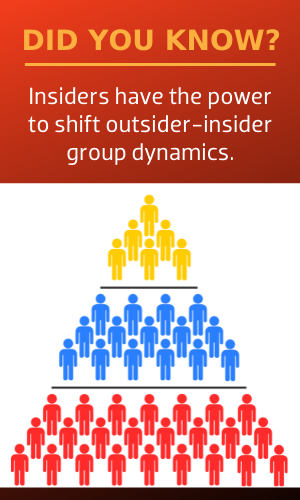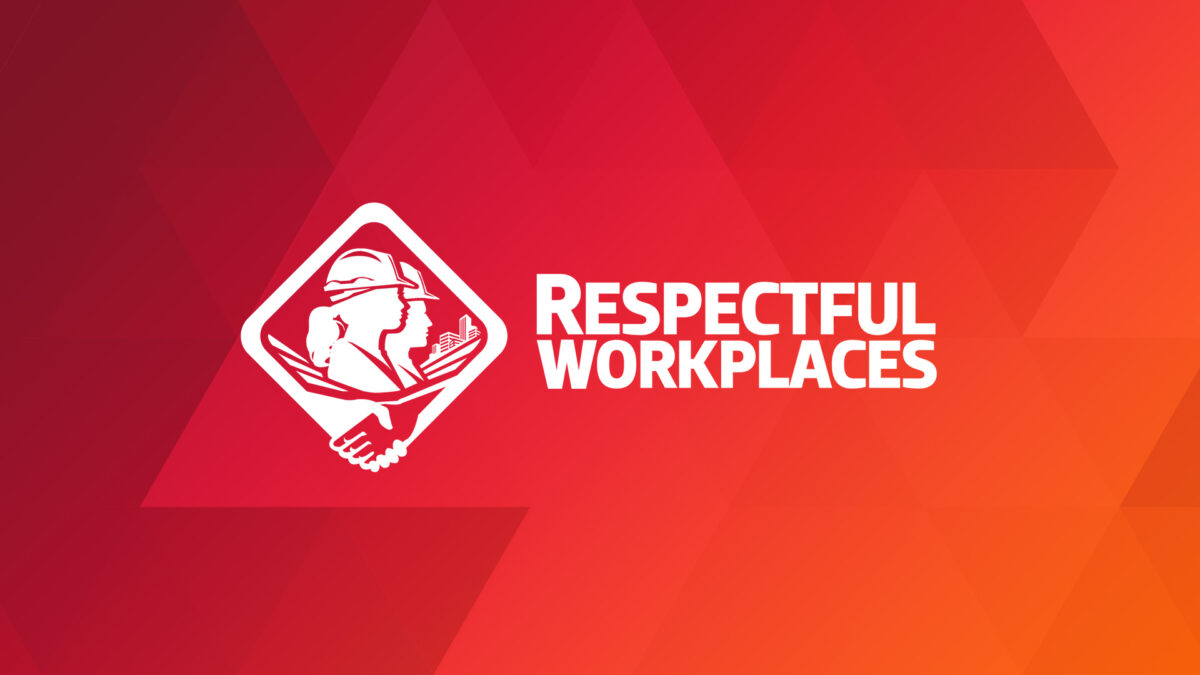Does your organization have a leadership team willing to challenge its own conventional wisdom?

Readers will remember that outsider and insider groups based on demographic characteristics or social group identities such as race, gender, ethnicity etc. are present in every organization (see Blog #50). The presence of outsiders and insider groups creates dynamics that can limit the career opportunities and success of Black, Indigenous, and People of Colour.
According to the dynamics of outsider-insider groups, to the extent that outsiders are reluctant to share their knowledge about the obstacles to inclusion, insiders may not have the information that would motivate them to make changes. In addition, because some outsiders are able to adapt, insiders may believe that this is evidence that obstacles are either insignificant or don’t exist. The end result is that the insiders’ perspectives remains and nothing changes.
This self-perpetuating cycle is difficult to shift. The challenge is that outsiders have more information than insiders about the obstacles to inclusion, but less power to make changes. In contrast, insiders usually have less information about the obstacles, but have the power necessary to make changes.
Readers will also remember that visible, ongoing leadership commitment is the key to effectively creating an inclusive organization (see Blog #47). In a “leader-led” model of inclusion, the leadership team makes inclusion a personal priority for themselves.
To successfully shift the self-perpetuating cycle of outsider-insider dynamics, researchers recommend that leaders and managers build individual awareness and self-management, and embrace the paradox of individuality versus group membership.
1. Individual awareness and self-management
- Challenge your own conventional wisdom
If you are a leader or manager, you probably already know one of the inherent dilemmas of being a leader: the higher you get, the less you know about the culture of the frontline and day-to-day operations.
In addition, hierarchy itself creates a strong outsider-insider dynamic, with those at higher levels automatically being part of the insider group. The more power you have through your insider group memberships, the less honest feedback you are likely to receive.
The result is an “echo chamber;” you see and receive the perspectives and information that reinforce what you already know. This can be a barrier to understanding and creating inclusion.
Your perspective as a leader is shaped by two things: your own insider and outsider group identities, and the group identities of those who are closest to you. To shift these dynamics, you need to challenge not only your own conventional wisdom, but that of the people most like you.
For example, if someone approaches management with a proposal to diversify the team for the sake of the company, the group may dismiss the idea precisely because the managers have no differing view upon which to draw. Challenging the insider group’s conventional wisdom could shift the direction toward more inclusion.
- Audit yourself, your relationships, and your critical moments
Often, we rely on the colleagues in our insider group to provide advice, feedback, and support in critical moments. If this group shares many similar traits, perspectives, and experiences, then it may be difficult to make informed decisions about the importance of, and how to promote an inclusive organization.
- Build relationships with outsiders
Human beings are strongly driven by biases that motivate us to build the closest relationships with the people who are most like us. There is nothing wrong with this tendency. However, it can reinforce outsider-insider group dynamics.
Leaders and managers must be intentional in overcoming these biases. Those who do not intentionally get out of their comfort zone and make connections with colleagues, peers, and mentors who are members of outsider groups, may be limiting their own development and possibly their organization’s growth.
2. Embrace the paradox of individuality versus group membership
- Notice patterns by social group identity
To help break the cycle of outsider-insider group dynamics, leaders and managers may need to intentionally get more information about the obstacles faced by outsiders. This may include noticing patterns in recruitment, promotion, mentorship, and career opportunities by social group identity. Patterns in these areas tell you where and what obstacles exist for members of outsider groups.
- Consider social group identity when developing new talent
Factor in the potential impact of group identity into the support you provide to potential new leaders and managers. Outsider group identities often create an additional set of challenges that can make or break success. For example, research has found that Black professionals report having less access to key decision makers and receiving fewer informal performance reviews than their white colleagues.
Understanding and shifting outsider-insider group dynamics is a very powerful tool to help organizations become more inclusive of Black, Indigenous, and People of Colour. However, to shift the dynamics, leaders and managers must be willing to challenge their own conventional wisdom, become informed about the obstacles, and use their power as insiders to shift the cycle of outsider-insider dynamics.
—
The BuildForce Respectful Workplace Online Toolkit provides three tools based on the proven practices of respectful and inclusive organizations to help address systemic racism: the Online Self-Assessment Tool, a Policy Framework and Implementation Guide, and the online course, “Working in a Respectful and Inclusive Workplace.”
The management Self-Assessment Tool provides a blueprint of the actions required to identify and re-work systems where unconscious bias may be impacting management goals to be fair and inclusive in their recruitment, promotion, and retention practices.
Also look for the new BuildForce online course, to be released in early 2021, to help leaders and managers to understand systemic racism. BuildForce is also developing a new module for the “Working in a Respectful and Inclusive Workplace” course to help workers develop awareness about systemic racism, also to be released in 2021.
For more info:
- CoQual. “Being Black in Corporate America: An Intersectional Exploration.” 2019. See https://coqual.org/wp-content/uploads/2020/09/CoqualBeingBlackinCorporateAmerica090720-1.pdf.
- Deloitte. “The Diversity and Inclusion Revolution: Eight Powerful Truths.” January 2018. See: www2.deloitte.com/us/en/insights/deloitte-review/issue-22/diversity-and-inclusion-at-work-eight-powerful-truths.html.
- Donovan, Mason and Mark Kaplan. “The Inclusion Dividend, 2nd Ed.” DG Press, New Hampshire, U.S., 2019.
Read from the beginning. Click here to start at Part 1.
What can an effective Respectful and Inclusive Workplace Program deliver?
- Become an employer of choice – attract, retain, and advance top talent from all sources of labour
- Unlock collaboration and innovation – create high-performing teams through diversity of thought and experience
- Build your brand – your organization will gain a competitive edge as a leader and innovator
Get started today!
The BuildForce Canada Online Respectful and Inclusive Workplace Toolkit includes:
- the Respectful Workplace Online Self-Assessment Tool to assist organization leadership in assessing their current situation and identifying where they may need to make changes
- the Respectful Workplace Policy Framework and Implementation Guide to assist organizations in creating and implementing a policy that supports a respectful and inclusive workplace
- the Respectful Workplace Online Training Course to train workers on how to create and support a respectful and inclusive workplace
- the online course Introduction to Understanding Systemic Racism: A Guide for Leaders and Managers
All the resources you need to create and support a respectful and inclusive workplace!

Respectful and Inclusive Workplaces
